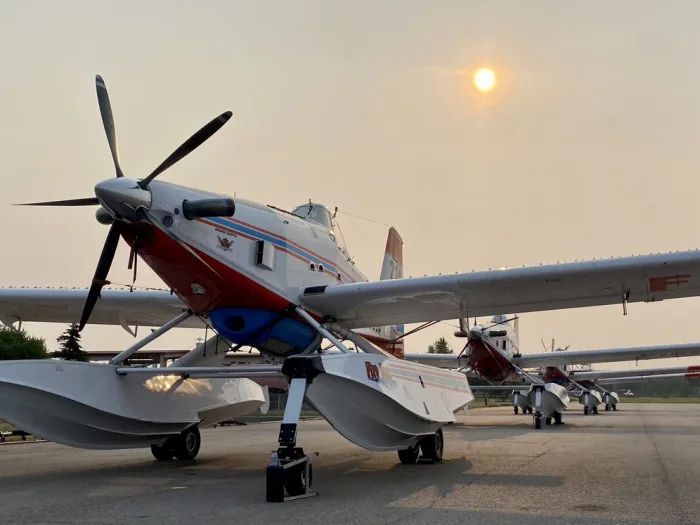“Visibility is dominating our decision making. It’s telling us what we can and cannot do.” said Dave Bloemkr, a Wildfire Operations Technician for the BLM Alaska Fire Service Tanana Zone.
The smoke from the fires, assisted by weather conditions in central and eastern Alaska have created an added obstacle for state and federal agencies’ suppression efforts. When smoky conditions worsen, aircraft are unable to fly daily missions to make water drops, transport firefighters and supply crews in the field.
With a landmass roughly one-fifth of the entire contiguous U.S., Alaska depends mostly on helicopters and airplanes to support wildland fire suppression and resource management. With more than 663,000 square miles of territory – an area more than twice the size of Texas – and only 17,681 miles of public roads, that can be a daunting task with clear skies. For instance, the 21 million-acre Lime Complex of 18 fires encompasses a vast, isolated geographic area between roadless communities accessible only by air and river.
Read more on this story at AK Fire Info.






